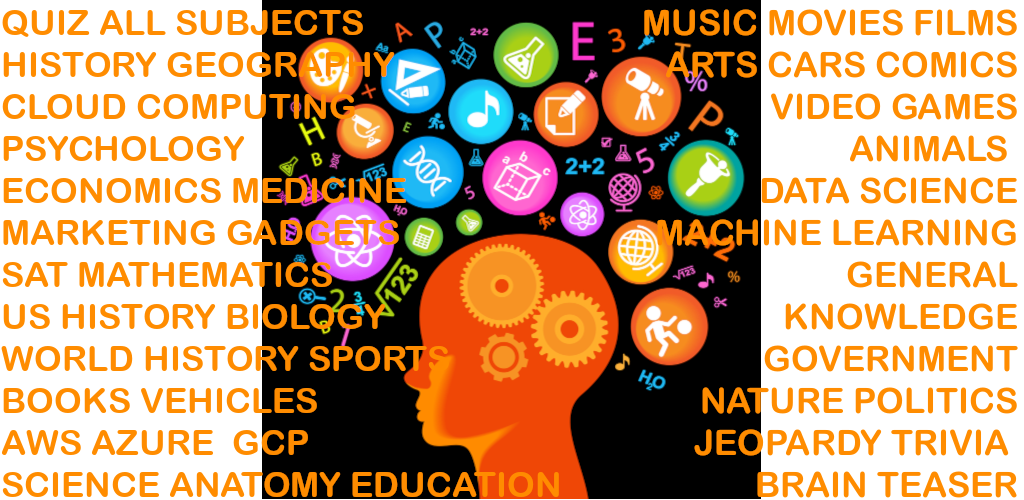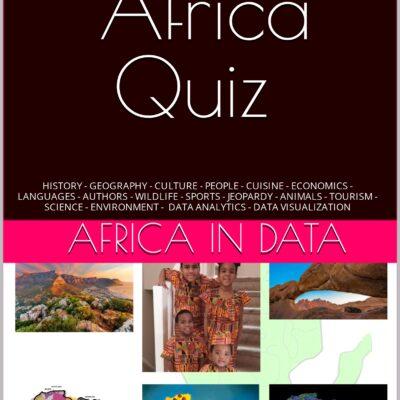What are some ethical concerns regarding artificial intelligence and its future development?
Debate about the ethical concerns surrounding artificial intelligence (AI) and machine learning have been becoming increasingly prominent. Issues such as safe AI and ethical AI are of utmost importance when it comes to continued development in this field, and if proper oversight is not account for these could easily become part of an unwanted dystopian future.
Regulations need to be made with regards to how machine learning algorithms are developed and executed, while due diligence is taken to ensure that no negative affects are caused from its use. This sort of regulation is necessary so as to ensure the AI being produced is both responsible and well-monitored; accounting for any human bias or negative externalities created by machine learning algorithms.

Artificial intelligence (AI) has the potential to revolutionize many aspects of society, but it also raises a number of ethical concerns. Some of the ethical concerns regarding the future development of AI include:
- Bias and discrimination: AI systems can be biased if they are trained on biased data or if they are designed to perpetuate existing biases. This can lead to discrimination against certain groups of people, such as those based on race, gender, or age.
- Privacy: AI systems often rely on data collected from individuals, and there are concerns about how this data is collected, stored, and used. There is a risk that personal data could be accessed or misused by unauthorized parties.
- Transparency: It can be difficult to understand how AI systems make decisions, which can make it difficult to hold them accountable for their actions. This lack of transparency can raise concerns about the fairness and accountability of AI systems.
- Job displacement: AI systems have the potential to automate many tasks, which could lead to job displacement and unemployment. There is a risk that AI could exacerbate existing inequalities and create new ones.
- Autonomous systems: AI systems are increasingly being used to make decisions without human intervention. This raises concerns about the accountability of these systems and the potential for them to cause harm.
These are just a few of the ethical concerns that have been raised regarding the future development of AI. It is important for researchers, policymakers, and other stakeholders to consider these issues and to work to address them as AI continues to evolve.

Is artificial intelligence being used to create subspecies or designer organisms?
Does artificial intelligence represent a risk factor that could potentially result in human annihilation?
There is ongoing debate about the potential risks and benefits of artificial intelligence (AI). While some experts argue that AI could bring significant benefits and advancements for society, others have raised concerns about the potential risks and negative impacts of AI.
One potential risk of AI is that it could potentially be used to develop and deploy weapons or other harmful technologies. For example, AI could be used to develop autonomous weapons systems that could make decisions about when to use force, potentially leading to unintended consequences.
Another potential risk of AI is that it could be used to amplify existing power imbalances or to create new ones. For example, AI could be used to automate certain jobs or tasks, potentially leading to job displacement and income inequality.
There is also the potential for AI to be used to undermine privacy and security, for example by collecting and analyzing large amounts of personal data without individuals’ knowledge or consent.
Overall, while it is difficult to predict the future development and impact of AI, it is important for society to carefully consider the potential risks and benefits of this technology and to take steps to mitigate any potential negative impacts.
How has the introduction of new technologies such as artificial intelligence changed the landscape of modern espionage?
The introduction of new technologies, such as artificial intelligence (AI), has significantly changed the landscape of modern espionage. Here are a few ways in which AI has impacted the field of espionage:
- Enhanced surveillance capabilities: AI can be used to analyze and process large amounts of data from various sources, such as video footage, social media posts, and electronic communications. This can enable intelligence agencies to gather more information and monitor individuals and organizations more effectively.
- Improved analysis and prediction: AI algorithms can be used to analyze and make sense of vast amounts of data, helping intelligence agencies to identify trends, predict future events, and make more informed decisions.
- Increased automation: AI can be used to automate various tasks, such as data collection and analysis, allowing intelligence agencies to operate more efficiently and with fewer resources.
- New threats: AI also introduces new threats, such as the potential for AI-powered cyber attacks or the use of AI-powered autonomous weapons systems.
Overall, the introduction of AI has had a significant impact on the field of espionage, enabling intelligence agencies to gather and analyze more information than ever before, but also introducing new risks and challenges.
In what ways can AI and machine learning be used to better predict, respond, and contain potential outbreaks before they become widespread?
Artificial intelligence (AI) and machine learning (ML) can be used to better predict, respond, and contain potential outbreaks before they become widespread in a number of ways:
- Data analysis: AI and ML can be used to analyze large amounts of data from various sources, such as social media, electronic health records, and surveillance systems, to identify patterns and trends that may indicate the early stages of an outbreak.
- Risk assessment: AI and ML can be used to assess the likelihood of an outbreak occurring in a particular region or population, and to identify factors that may increase the risk of an outbreak.
- Early warning systems: AI and ML can be used to develop early warning systems that can alert public health officials and other stakeholders of potential outbreaks in real-time, allowing them to take timely and appropriate action.
- Response planning: AI and ML can be used to help public health officials and other stakeholders develop and implement effective response plans to contain and control outbreaks.
- Predictive modeling: AI and ML can be used to develop predictive models that can forecast the likely trajectory of an outbreak and help to identify the most effective interventions to reduce its impact.
Overall, AI and ML have the potential to significantly improve our ability to predict, respond, and contain potential outbreaks before they become widespread, helping to protect public health and prevent the spread of diseases.
In what ways has artificial intelligence revolutionized control systems for unmanned aerial vehicles (UAVs)?
Artificial intelligence (AI) has revolutionized control systems for unmanned aerial vehicles (UAVs) in several ways:
Advertise with us - Post Your Good Content Here
We are ranked in the Top 20 on Google
AI Dashboard is available on the Web, Apple, Google, and Microsoft, PRO version
- Autonomous flight: AI algorithms can be used to enable UAVs to fly autonomously, without the need for human control. This can allow UAVs to perform tasks such as surveillance, mapping, and delivery without the need for a human operator.
- Obstacle avoidance: AI algorithms can be used to enable UAVs to detect and avoid obstacles in their path, such as trees, buildings, and other aircraft. This can improve the safety and reliability of UAVs, particularly in environments where there are many potential hazards.
- Improved decision making: AI algorithms can be used to enable UAVs to make decisions in real-time based on data from sensors and other sources. This can allow UAVs to adapt to changing conditions and to respond to unexpected situations, improving their performance and reliability.
- Enhanced capabilities: AI algorithms can be used to enable UAVs to perform tasks that would be difficult or impossible for humans to do, such as flying through small or complex spaces, or flying in extreme environments.
Overall, the use of AI in control systems for UAVs has the potential to significantly improve the capabilities and performance of these systems, and to enable UAVs to perform a wide range of tasks that were previously impractical or impossible.
What impact will artificial intelligence have on medical research and healthcare delivery in the next decade?
Artificial intelligence (AI) has the potential to have a significant impact on medical research and healthcare delivery in the next decade. Some of the ways AI could potentially be used include:
- Improving drug discovery: AI can analyze large amounts of data from genomic and chemical databases to identify potential new drugs, which can speed up the drug discovery process.
- Personalized medicine: AI can be used to analyze patients’ medical history, symptoms, and test results to create personalized treatment plans.
- Diagnosis: AI algorithms can be trained to analyze medical images and make accurate diagnoses, which can assist physicians in making more accurate and faster diagnoses.
- Predictive analytics: AI can be used to analyze data from electronic health records to identify patterns and predict outcomes, which can help healthcare providers make more informed decisions and improve patient outcomes.
- Robotic surgery: AI-controlled robots are being developed to assist in surgery, which can improve precision and reduce recovery time for patients.
- Clinical trial design: AI can be used to analyze clinical data to identify patterns and optimize trial design, which can improve the efficiency and success rate of clinical trials.
That being said, the success of these application depends on the quality and quantity of data available, robustness of the AI algorithms, and other factors such as privacy, security and transparency, thus it is important to keep in mind that the impact of AI in healthcare will still have a lot of considerations and the success rate varies case by case and sector by sector.
Active Hydrating Toner, Anti-Aging Replenishing Advanced Face Moisturizer, with Vitamins A, C, E & Natural Botanicals to Promote Skin Balance & Collagen Production, 6.7 Fl Oz


Age Defying 0.3% Retinol Serum, Anti-Aging Dark Spot Remover for Face, Fine Lines & Wrinkle Pore Minimizer, with Vitamin E & Natural Botanicals


Firming Moisturizer, Advanced Hydrating Facial Replenishing Cream, with Hyaluronic Acid, Resveratrol & Natural Botanicals to Restore Skin's Strength, Radiance, and Resilience, 1.75 Oz

Skin Stem Cell Serum


Smartphone 101 - Pick a smartphone for me - android or iOS - Apple iPhone or Samsung Galaxy or Huawei or Xaomi or Google Pixel
Can AI Really Predict Lottery Results? We Asked an Expert.

Djamgatech

Read Photos and PDFs Aloud for me iOS
Read Photos and PDFs Aloud for me android
Read Photos and PDFs Aloud For me Windows 10/11
Read Photos and PDFs Aloud For Amazon
Get 20% off Google Workspace (Google Meet) Business Plan (AMERICAS): M9HNXHX3WC9H7YE (Email us for more)
Get 20% off Google Google Workspace (Google Meet) Standard Plan with the following codes: 96DRHDRA9J7GTN6(Email us for more)
FREE 10000+ Quiz Trivia and and Brain Teasers for All Topics including Cloud Computing, General Knowledge, History, Television, Music, Art, Science, Movies, Films, US History, Soccer Football, World Cup, Data Science, Machine Learning, Geography, etc....

List of Freely available programming books - What is the single most influential book every Programmers should read
- Bjarne Stroustrup - The C++ Programming Language
- Brian W. Kernighan, Rob Pike - The Practice of Programming
- Donald Knuth - The Art of Computer Programming
- Ellen Ullman - Close to the Machine
- Ellis Horowitz - Fundamentals of Computer Algorithms
- Eric Raymond - The Art of Unix Programming
- Gerald M. Weinberg - The Psychology of Computer Programming
- James Gosling - The Java Programming Language
- Joel Spolsky - The Best Software Writing I
- Keith Curtis - After the Software Wars
- Richard M. Stallman - Free Software, Free Society
- Richard P. Gabriel - Patterns of Software
- Richard P. Gabriel - Innovation Happens Elsewhere
- Code Complete (2nd edition) by Steve McConnell
- The Pragmatic Programmer
- Structure and Interpretation of Computer Programs
- The C Programming Language by Kernighan and Ritchie
- Introduction to Algorithms by Cormen, Leiserson, Rivest & Stein
- Design Patterns by the Gang of Four
- Refactoring: Improving the Design of Existing Code
- The Mythical Man Month
- The Art of Computer Programming by Donald Knuth
- Compilers: Principles, Techniques and Tools by Alfred V. Aho, Ravi Sethi and Jeffrey D. Ullman
- Gödel, Escher, Bach by Douglas Hofstadter
- Clean Code: A Handbook of Agile Software Craftsmanship by Robert C. Martin
- Effective C++
- More Effective C++
- CODE by Charles Petzold
- Programming Pearls by Jon Bentley
- Working Effectively with Legacy Code by Michael C. Feathers
- Peopleware by Demarco and Lister
- Coders at Work by Peter Seibel
- Surely You're Joking, Mr. Feynman!
- Effective Java 2nd edition
- Patterns of Enterprise Application Architecture by Martin Fowler
- The Little Schemer
- The Seasoned Schemer
- Why's (Poignant) Guide to Ruby
- The Inmates Are Running The Asylum: Why High Tech Products Drive Us Crazy and How to Restore the Sanity
- The Art of Unix Programming
- Test-Driven Development: By Example by Kent Beck
- Practices of an Agile Developer
- Don't Make Me Think
- Agile Software Development, Principles, Patterns, and Practices by Robert C. Martin
- Domain Driven Designs by Eric Evans
- The Design of Everyday Things by Donald Norman
- Modern C++ Design by Andrei Alexandrescu
- Best Software Writing I by Joel Spolsky
- The Practice of Programming by Kernighan and Pike
- Pragmatic Thinking and Learning: Refactor Your Wetware by Andy Hunt
- Software Estimation: Demystifying the Black Art by Steve McConnel
- The Passionate Programmer (My Job Went To India) by Chad Fowler
- Hackers: Heroes of the Computer Revolution
- Algorithms + Data Structures = Programs
- Writing Solid Code
- JavaScript - The Good Parts
- Getting Real by 37 Signals
- Foundations of Programming by Karl Seguin
- Computer Graphics: Principles and Practice in C (2nd Edition)
- Thinking in Java by Bruce Eckel
- The Elements of Computing Systems
- Refactoring to Patterns by Joshua Kerievsky
- Modern Operating Systems by Andrew S. Tanenbaum
- The Annotated Turing
- Things That Make Us Smart by Donald Norman
- The Timeless Way of Building by Christopher Alexander
- The Deadline: A Novel About Project Management by Tom DeMarco
- The C++ Programming Language (3rd edition) by Stroustrup
- Patterns of Enterprise Application Architecture
- Computer Systems - A Programmer's Perspective
- Agile Principles, Patterns, and Practices in C# by Robert C. Martin
- Growing Object-Oriented Software, Guided by Tests
- Framework Design Guidelines by Brad Abrams
- Object Thinking by Dr. David West
- Advanced Programming in the UNIX Environment by W. Richard Stevens
- Hackers and Painters: Big Ideas from the Computer Age
- The Soul of a New Machine by Tracy Kidder
- CLR via C# by Jeffrey Richter
- The Timeless Way of Building by Christopher Alexander
- Design Patterns in C# by Steve Metsker
- Alice in Wonderland by Lewis Carol
- Zen and the Art of Motorcycle Maintenance by Robert M. Pirsig
- About Face - The Essentials of Interaction Design
- Here Comes Everybody: The Power of Organizing Without Organizations by Clay Shirky
- The Tao of Programming
- Computational Beauty of Nature
- Writing Solid Code by Steve Maguire
- Philip and Alex's Guide to Web Publishing
- Object-Oriented Analysis and Design with Applications by Grady Booch
- Effective Java by Joshua Bloch
- Computability by N. J. Cutland
- Masterminds of Programming
- The Tao Te Ching
- The Productive Programmer
- The Art of Deception by Kevin Mitnick
- The Career Programmer: Guerilla Tactics for an Imperfect World by Christopher Duncan
- Paradigms of Artificial Intelligence Programming: Case studies in Common Lisp
- Masters of Doom
- Pragmatic Unit Testing in C# with NUnit by Andy Hunt and Dave Thomas with Matt Hargett
- How To Solve It by George Polya
- The Alchemist by Paulo Coelho
- Smalltalk-80: The Language and its Implementation
- Writing Secure Code (2nd Edition) by Michael Howard
- Introduction to Functional Programming by Philip Wadler and Richard Bird
- No Bugs! by David Thielen
- Rework by Jason Freid and DHH
- JUnit in Action
#BlackOwned #BlackEntrepreneurs #BlackBuniness #AWSCertified #AWSCloudPractitioner #AWSCertification #AWSCLFC02 #CloudComputing #AWSStudyGuide #AWSTraining #AWSCareer #AWSExamPrep #AWSCommunity #AWSEducation #AWSBasics #AWSCertified #AWSMachineLearning #AWSCertification #AWSSpecialty #MachineLearning #AWSStudyGuide #CloudComputing #DataScience #AWSCertified #AWSSolutionsArchitect #AWSArchitectAssociate #AWSCertification #AWSStudyGuide #CloudComputing #AWSArchitecture #AWSTraining #AWSCareer #AWSExamPrep #AWSCommunity #AWSEducation #AzureFundamentals #AZ900 #MicrosoftAzure #ITCertification #CertificationPrep #StudyMaterials #TechLearning #MicrosoftCertified #AzureCertification #TechBooks
Top 1000 Canada Quiz and trivia: CANADA CITIZENSHIP TEST- HISTORY - GEOGRAPHY - GOVERNMENT- CULTURE - PEOPLE - LANGUAGES - TRAVEL - WILDLIFE - HOCKEY - TOURISM - SCENERIES - ARTS - DATA VISUALIZATION

Top 1000 Africa Quiz and trivia: HISTORY - GEOGRAPHY - WILDLIFE - CULTURE - PEOPLE - LANGUAGES - TRAVEL - TOURISM - SCENERIES - ARTS - DATA VISUALIZATION

Exploring the Pros and Cons of Visiting All Provinces and Territories in Canada.

Exploring the Advantages and Disadvantages of Visiting All 50 States in the USA

Health Health, a science-based community to discuss health news and the coronavirus (COVID-19) pandemic
- The pull-out method: Why this common contraceptive fails to deliverby /u/Kampala_Dispatch on July 26, 2024 at 7:51 pm
submitted by /u/Kampala_Dispatch [link] [comments]
- Health Canada data reveals surprising number of adverse cannabis reactions (spoiler: it's small)by /u/carajuana_readit on July 26, 2024 at 5:49 pm
submitted by /u/carajuana_readit [link] [comments]
- Online portals deliver scary health news before doctors can weigh inby /u/washingtonpost on July 26, 2024 at 4:37 pm
submitted by /u/washingtonpost [link] [comments]
- Vaccine 'sharply cuts risk of dementia' new study findsby /u/SubstantialSnow7114 on July 26, 2024 at 1:53 pm
submitted by /u/SubstantialSnow7114 [link] [comments]
- Calls to limit sexual partners as mpox makes a resurgence in Australiaby /u/boppinmule on July 26, 2024 at 12:31 pm
submitted by /u/boppinmule [link] [comments]
Today I Learned (TIL) You learn something new every day; what did you learn today? Submit interesting and specific facts about something that you just found out here.
- TIL that in Thailand, if your spouse cheats on you, you can legally sue their lover for damages and can receive up to 5,000,000 THB ($140,000 USD) or more under Section 1523 of the Thai Civil and Commercial Codeby /u/Mavrokordato on July 26, 2024 at 6:57 pm
submitted by /u/Mavrokordato [link] [comments]
- TIL that with a population of 170 million people, Bangladesh is the most populous country to have never won a medal at the Olympic Games.by /u/Blackraven2007 on July 26, 2024 at 6:49 pm
submitted by /u/Blackraven2007 [link] [comments]
- TIL a psychologist got himself admitted to a mental hospital by claiming he heard the words "empty", "hollow" and "thud" in his head. Then, it took him two months to convince them he was sane, after agreeing he was insane and accepting medication.by /u/Hadeverse-050 on July 26, 2024 at 6:44 pm
submitted by /u/Hadeverse-050 [link] [comments]
- TIL Senator John Edwards of NC, USA cheated on his wife and had a child with another woman. He tried to deny it but eventually caved and admitted his mistake. He used campaign funds and was indicted by a grand jury. His life story inspired the show "The Good Wife" by Robert & Michelle Kingby /u/AdvisorPast637 on July 26, 2024 at 6:09 pm
submitted by /u/AdvisorPast637 [link] [comments]
- TIL Zhang Shuhong was a Chinese businessman who committed suicide after toys made at his factory for Fisher-Price (a division of Mattel) were found to contain lead paintby /u/Hopeful-Candle-4884 on July 26, 2024 at 4:43 pm
submitted by /u/Hopeful-Candle-4884 [link] [comments]
Reddit Science This community is a place to share and discuss new scientific research. Read about the latest advances in astronomy, biology, medicine, physics, social science, and more. Find and submit new publications and popular science coverage of current research.
- Human decision makers who possess the authority to override ML predictions may impede the self-correction of discriminatory models and even induce initially unbiased models to become discriminatory with timeby /u/f1u82ypd on July 26, 2024 at 6:29 pm
submitted by /u/f1u82ypd [link] [comments]
- Study uses Game of Thrones (GOT) to advance understanding of face blindness: Psychologists have used the TV series GOT to understand how the brain enables us to recognise faces. Their findings provide new insights into prosopagnosia or face blindness, a condition that impairs facial recognition.by /u/AnnaMouse247 on July 26, 2024 at 5:14 pm
submitted by /u/AnnaMouse247 [link] [comments]
- Specific genes may be related to the trajectory of recovery for stroke survivors, study finds. Researchers say genetic variants were strongly associated with depression, PTSD and cognitive health outcomes. Findings may provide useful insights for developing targeted therapies.by /u/AnnaMouse247 on July 26, 2024 at 5:08 pm
submitted by /u/AnnaMouse247 [link] [comments]
- New experimental drug shows promise in clearing HIV from brain: originally developed to treat cancer, study finds that by targeting infected cells in the brain, drug may clear virus from hidden areas that have been a major challenge in HIV treatment.by /u/AnnaMouse247 on July 26, 2024 at 4:57 pm
submitted by /u/AnnaMouse247 [link] [comments]
- Rapid diagnosis sepsis tests could decrease result wait times from days to hours, researchers report in Natureby /u/Science_News on July 26, 2024 at 3:50 pm
submitted by /u/Science_News [link] [comments]
Reddit Sports Sports News and Highlights from the NFL, NBA, NHL, MLB, MLS, and leagues around the world.
- Charles Barkley leaves door open to post-TNT job optionsby /u/PrincessBananas85 on July 26, 2024 at 8:47 pm
submitted by /u/PrincessBananas85 [link] [comments]
- Report: Nuggets sign Westbrook to 2-year, $6.8M dealby /u/Oldtimer_2 on July 26, 2024 at 8:13 pm
submitted by /u/Oldtimer_2 [link] [comments]
- Dolphins signing Tua to 4-year, $212.4M extensionby /u/Oldtimer_2 on July 26, 2024 at 8:09 pm
submitted by /u/Oldtimer_2 [link] [comments]
- Rams cornerback Derion Kendrick suffers season-ending torn ACLby /u/Oldtimer_2 on July 26, 2024 at 8:06 pm
submitted by /u/Oldtimer_2 [link] [comments]
- Hosting the Olympics has become financially untenable, economists sayby /u/toaster_strudel_ on July 26, 2024 at 7:34 pm
submitted by /u/toaster_strudel_ [link] [comments]

















 96DRHDRA9J7GTN6
96DRHDRA9J7GTN6